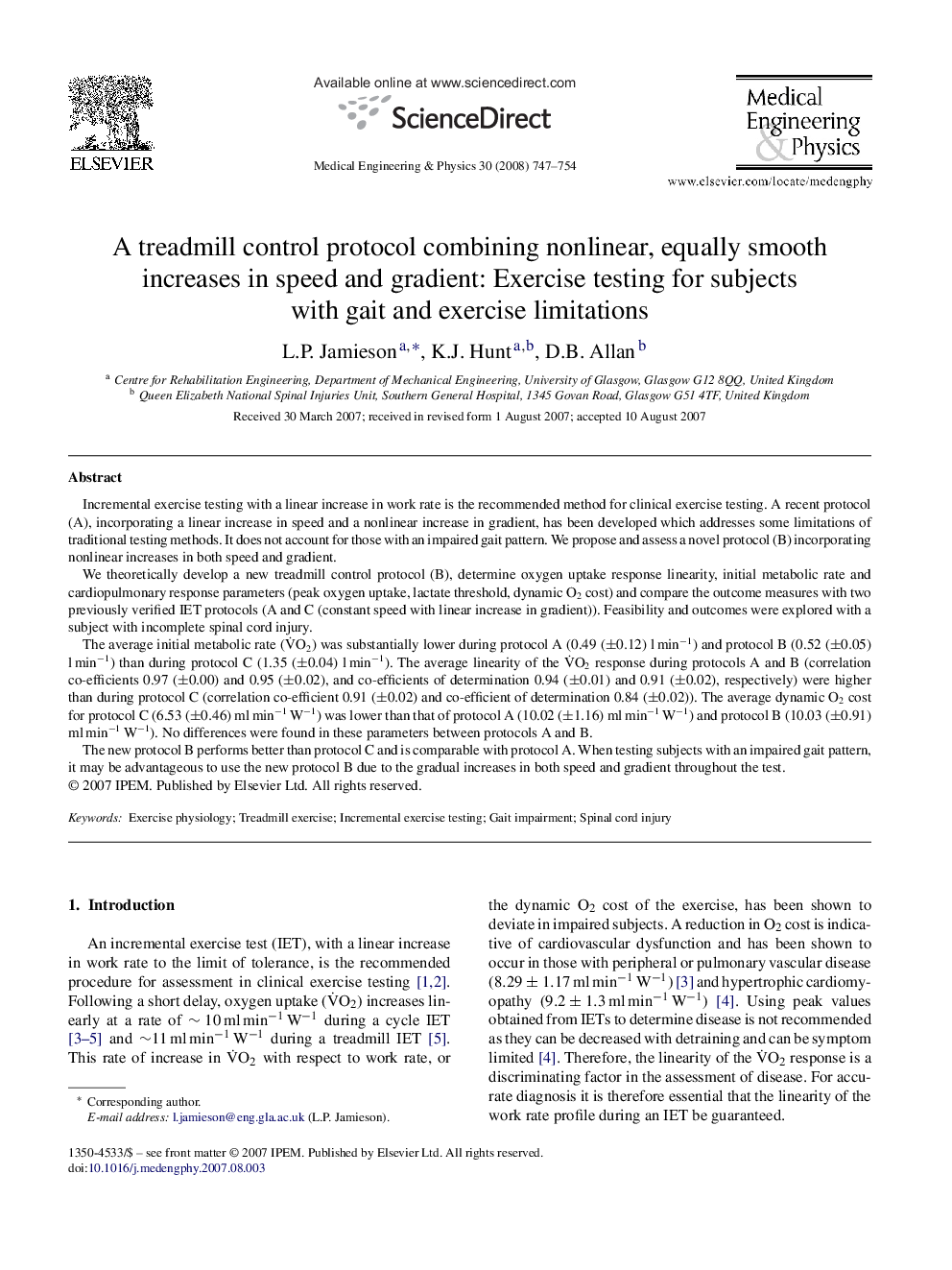| Article ID | Journal | Published Year | Pages | File Type |
|---|---|---|---|---|
| 877189 | Medical Engineering & Physics | 2008 | 8 Pages |
Incremental exercise testing with a linear increase in work rate is the recommended method for clinical exercise testing. A recent protocol (A), incorporating a linear increase in speed and a nonlinear increase in gradient, has been developed which addresses some limitations of traditional testing methods. It does not account for those with an impaired gait pattern. We propose and assess a novel protocol (B) incorporating nonlinear increases in both speed and gradient.We theoretically develop a new treadmill control protocol (B), determine oxygen uptake response linearity, initial metabolic rate and cardiopulmonary response parameters (peak oxygen uptake, lactate threshold, dynamic O2 cost) and compare the outcome measures with two previously verified IET protocols (A and C (constant speed with linear increase in gradient)). Feasibility and outcomes were explored with a subject with incomplete spinal cord injury.The average initial metabolic rate (V˙O2) was substantially lower during protocol A (0.49 (±0.12±0.12) l min−1) and protocol B (0.52 (±0.05±0.05) l min−1) than during protocol C (1.35 (±0.04±0.04) l min−1). The average linearity of the V˙O2 response during protocols A and B (correlation co-efficients 0.97 (±0.00±0.00) and 0.95 (±0.02±0.02), and co-efficients of determination 0.94 (±0.01±0.01) and 0.91 (±0.02±0.02), respectively) were higher than during protocol C (correlation co-efficient 0.91 (±0.02±0.02) and co-efficient of determination 0.84 (±0.02±0.02)). The average dynamic O2 cost for protocol C (6.53 (±0.46±0.46) ml min−1 W−1) was lower than that of protocol A (10.02 (±1.16±1.16) ml min−1 W−1) and protocol B (10.03 (±0.91±0.91) ml min−1 W−1). No differences were found in these parameters between protocols A and B.The new protocol B performs better than protocol C and is comparable with protocol A. When testing subjects with an impaired gait pattern, it may be advantageous to use the new protocol B due to the gradual increases in both speed and gradient throughout the test.
